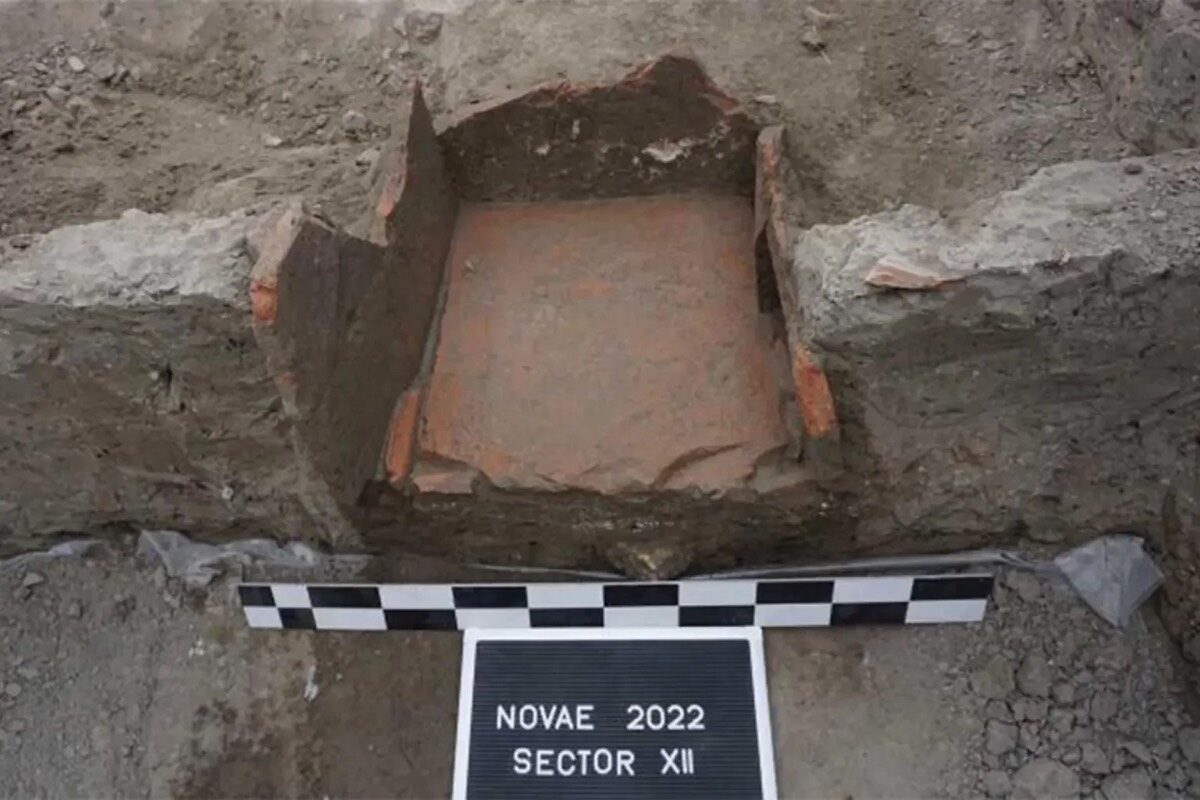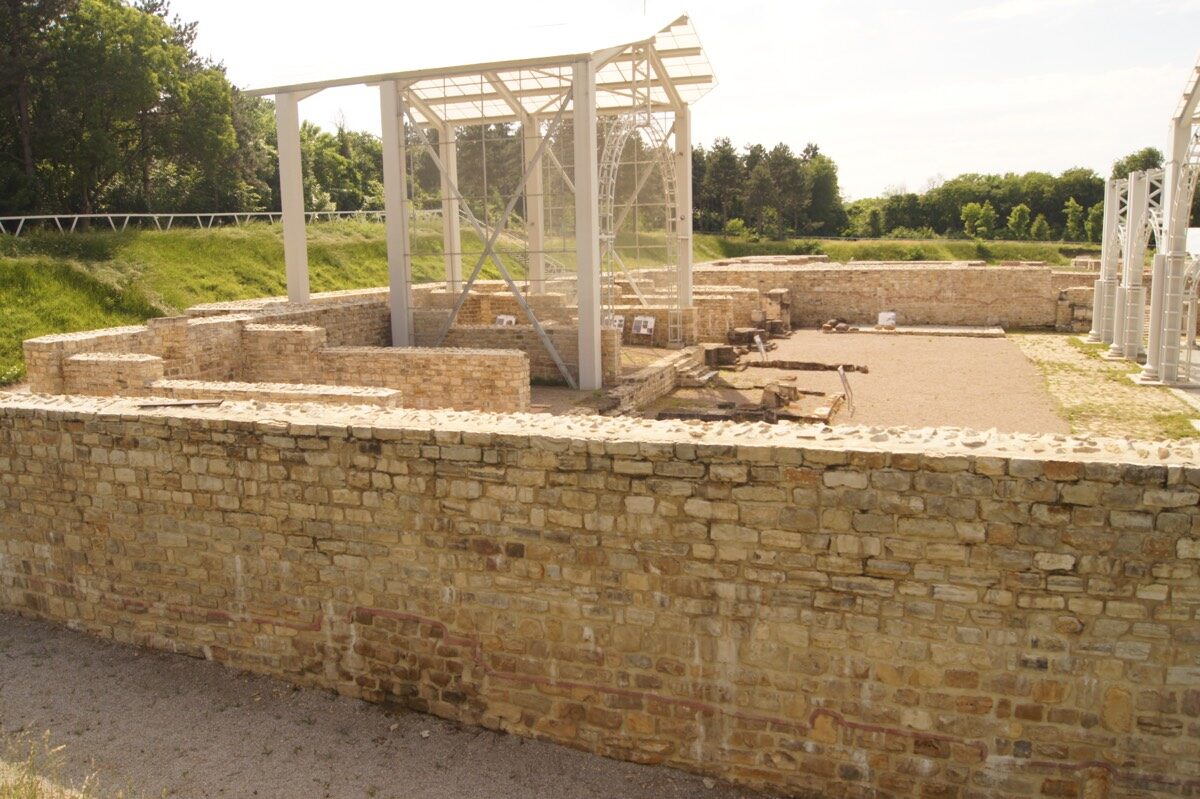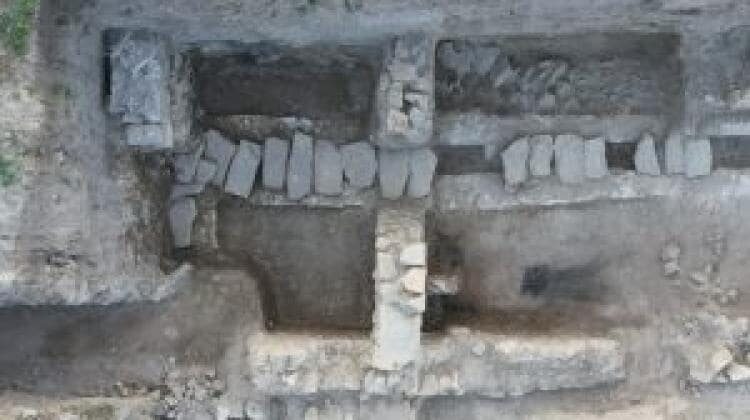
Roman soldiers occupying what is now northern Bulgaria along the Danube River had to deal with all manner of uprisings against the empire, but at least they could keep their wine reasonably cool. Archaeologists have discovered a 2,000-year-old built-in ceramic structure they believe was used to store wine and perishable foods.
It's a rare find and the second such "refrigerator" to be discovered at a former fortress at the archaeological site of Novae. The first was found last year: a container made of ceramic plates beneath the floor of a military barracks room. It was most likely used to store food, based on the ceramic vessels and small baked bone fragments found along with it, as well as charcoal and a bowl that may have been used to burn incense to ward off insects.
This latest find is noteworthy because it has an additional cooling element in the form of a lead pipe (connected to a system of aqueducts) running along one side. The fragments of wine-drinking vessels, bowls, and animal bones should help the team re-create the soldiers' last meal, according to team leader Piotr Dyczek, an archaeologist at the University of Warsaw in Poland.
The fortress at Novae was founded around the middle of the 1st century CE by the VIII Augustus Legion to fortify the Roman Empire's border along the Danube against barbarian invaders — most notably crushing the Thracian uprising. It also served as a base for the 1st Italian Legion, established by Emperor Nero after the Roman-Parthian War. When Nero died, the 1st Italian Legion briefly fought for the eight-month emperor Vitellius, who was defeated by Vespasian's forces. Vespasian then assigned the legion to Novae, where it defended Rome during Trajan's Dacian Wars, among other conflicts.
There are three known aqueducts that supplied water to the fortress, and a civilian settlement gradually developed nearby to house the various craftsmen and tradespeople who tended to follow the Roman legion during its travels. Novae survived a 250 CE attack by the Goths but was destroyed by barbarian attacks in the second half of that century. The legion remained, albeit in smaller detachments, rebuilding various small forts and civil buildings, and paving new streets by reusing old stone. A cathedral was built over the fortress in the late 5th and 6th centuries, and the town eventually ceased to exist as a Roman outpost in the late 6th century.
Polish and Bulgarian archaeologists have been working to excavate the site for decades, gradually revealing a headquarters building, a hospital, baths, and a necropolis, among other structures. They have also found wells, weaving and fishing weights, reels, glass fragments, and a simple hand mill for grinding grain (a quern). Last year's work yielded several dozen coins, most likely dating from the 3rd century CE to the start of Constantine the Great's reign in the early 4th century.
This year saw the excavation of the military barracks believed to be associated with the VIII Augustus Legion — the oldest legion in the Imperial Roman Army and the first to be permanently stationed at the Danube border. Along with the wine fridge, Dyczek's team also found a 4th century CE ceramic furnace, yielding a set of wine cups. They also uncovered a small pendant featuring a silver mouse and 200 other small artifacts.
Jennifer Ouellette is a senior reporter at Ars Technica with a particular focus on where science meets culture, covering everything from physics and related interdisciplinary topics to her favorite films and TV series. Jennifer lives in Baltimore with her spouse, physicist Sean M. Carroll, and their two cats, Ariel and Caliban.





Reader Comments
to our Newsletter